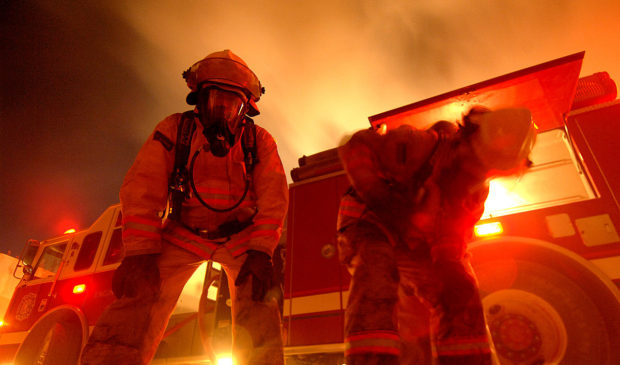Public safety departments discuss diversity strategies
Thursday, November 10, 2016 by
Jack Craver Austin’s public safety agencies are not as diverse as the city they serve, according to a presentation by police, fire and EMS officials at a meeting of the Public Safety Commission last week.
“We need to show we do have diverse individuals in the fire department,” said Assistant Chief Richard Davis to the commission. “In order to assist that, I think we need more diversity in the upper echelon.”
Latinos have a much lower representation in the fire department (16 percent) than in all other city departments (36.5 percent), and African-Americans make up only 4.36 percent of the city’s firefighters, while they comprise 7 percent of all city employees and about 8 percent of the city’s population. Asian-Americans make up 1.8 percent of firefighters, and the remaining 77 percent are white.
The lack of black firefighters prompted Blair Campbell, president of the Austin African-American Firefighters Association, to urge for changes that would boost recruitment and retention of black applicants. He reminded the commission that the city had agreed to a legal settlement.
One of the problems, he said, was a recently implemented requirement that firefighters be able to complete a 1.5-mile run in just over 12 minutes. The city lost out on two black applicants as a result of that new requirement, which Campbell suggested was redundant because of a separate physical assessment conducted on a treadmill. He also suggested that any running requirement be scaled based on age, so that older applicants have more time to finish.
Assistant Fire Chief Brian Tanzola defended the running test, adding that it did not impact any one demographic group disproportionately.
Commissioner Kim Rossmo strongly rebuked Campbell’s suggestion that the department consider lightening its physical fitness requirements in order to hire more members of one demographic group.
“Either you can do the job or you can’t,” he said. He later added that he didn’t think that, at 61 years of age, he should be given a half hour to run a mile-and-a-half.
Campbell suggested that the test did not reflect a real firefighting situation: “When I’m on a fire scene, I do not run. That’s dangerous.”
Rossmo countered that it was nevertheless an important display of “anaerobic ability.”
The Austin Police Department is about two-thirds white, 20 percent Latino, 8.6 percent African-American and 2 percent Asian-American.
Assistant Police Chief Chris McIlvain said that his department had changed a physical assessment in response to difficulties hiring women. The department had replaced a physical assessment that consisted of situps, pushups and a run with a rowing test. The result has been more female officers, he said.
In order to boost diversity, McIlvain noted the department’s recruiting efforts at military bases, historically black colleges and heavily Latino areas, including a recent recruitment trip to Puerto Rico.
In addition, Chief Art Acevedo is planning on asking the state Legislature to allow the department to employ legal noncitizen residents, as is already the case in the military.
Finally, said McIlvain, the department has eliminated its requirement that applicants have completed 30 hours of college credits. Time spent in a classroom, he said, “did not provide us with a good basis for saying whether they were good or bad.”
The EMS is the least-diverse public safety department. It is 80 percent white, 14 percent Latino and 2 percent African-American.
The Austin Monitor’s work is made possible by donations from the community. Though our reporting covers donors from time to time, we are careful to keep business and editorial efforts separate while maintaining transparency. A complete list of donors is available here, and our code of ethics is explained here.
Photo: Public Domain
You're a community leader
And we’re honored you look to us for serious, in-depth news. You know a strong community needs local and dedicated watchdog reporting. We’re here for you and that won’t change. Now will you take the powerful next step and support our nonprofit news organization?






